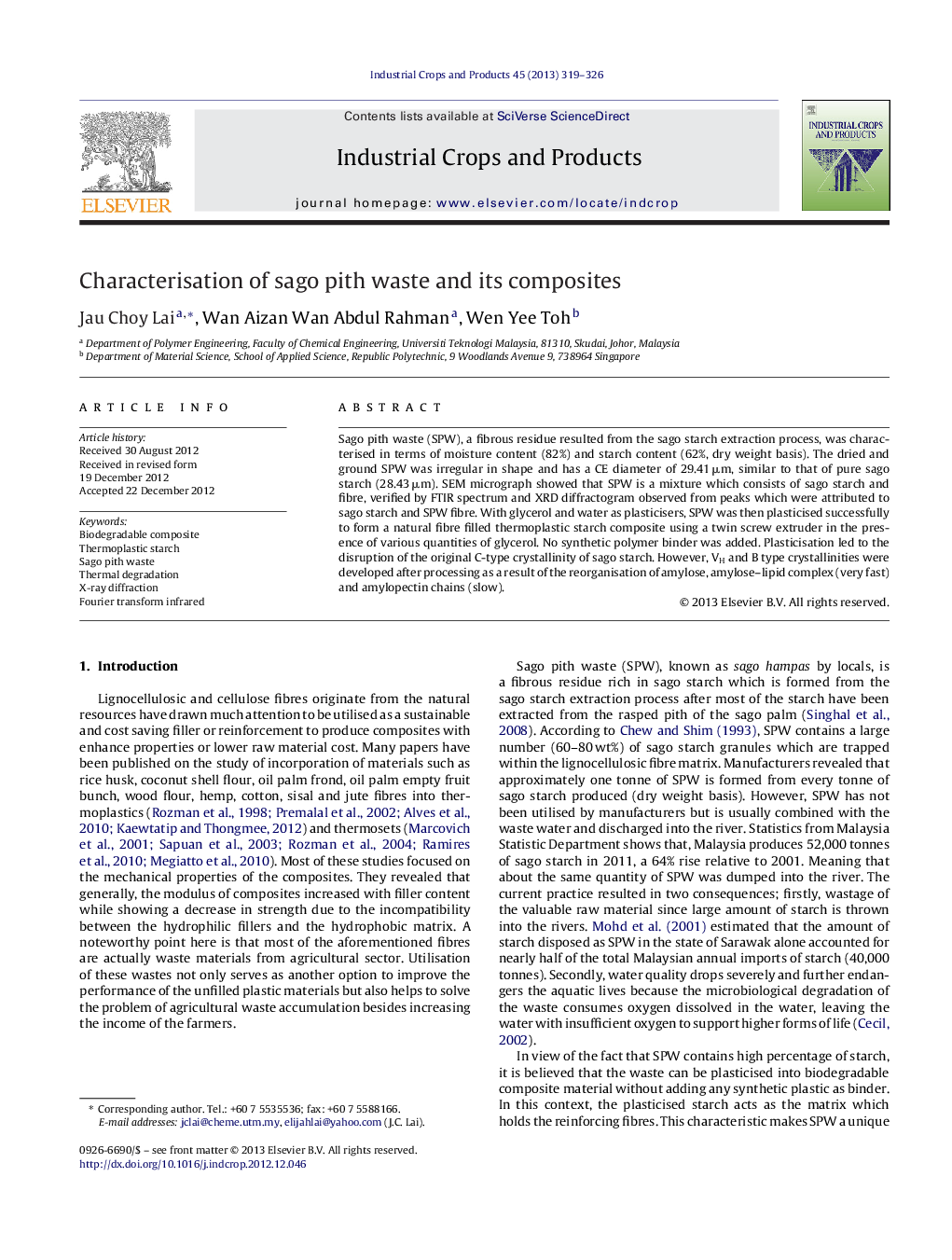| Article ID | Journal | Published Year | Pages | File Type |
|---|---|---|---|---|
| 4514054 | Industrial Crops and Products | 2013 | 8 Pages |
Sago pith waste (SPW), a fibrous residue resulted from the sago starch extraction process, was characterised in terms of moisture content (82%) and starch content (62%, dry weight basis). The dried and ground SPW was irregular in shape and has a CE diameter of 29.41 μm, similar to that of pure sago starch (28.43 μm). SEM micrograph showed that SPW is a mixture which consists of sago starch and fibre, verified by FTIR spectrum and XRD diffractogram observed from peaks which were attributed to sago starch and SPW fibre. With glycerol and water as plasticisers, SPW was then plasticised successfully to form a natural fibre filled thermoplastic starch composite using a twin screw extruder in the presence of various quantities of glycerol. No synthetic polymer binder was added. Plasticisation led to the disruption of the original C-type crystallinity of sago starch. However, VH and B type crystallinities were developed after processing as a result of the reorganisation of amylose, amylose–lipid complex (very fast) and amylopectin chains (slow).
► FTIR and XRD showed peaks which were attributed to sago starch and fibre. ► Sago pith waste can be converted into natural fibre reinforced thermoplastic starch composites without adding any binder. ► Plasticisation and ageing led to changes in starch crystalline structure.
